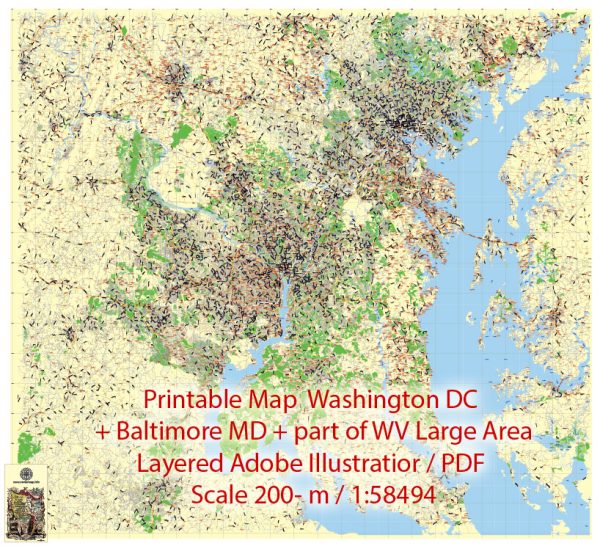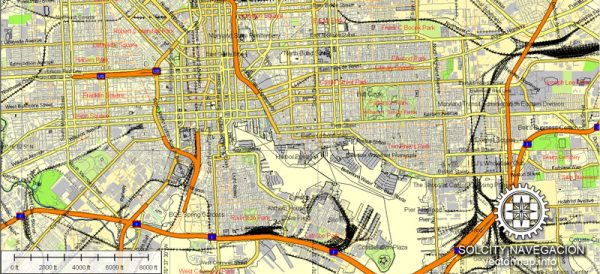Washington, D.C. and Baltimore, Maryland are both major cities located in the United States, and they are situated in the Mid-Atlantic region of the country. While they have distinct urban environments, they share some ecological characteristics due to their geographic proximity and the fact that they are both located on the eastern seaboard of the United States. Here is an ecological description of the general region:
- Climate:
- Both Washington, D.C. and Baltimore experience a humid subtropical climate, characterized by hot and humid summers and cool to mild winters. This climate supports a diverse range of plant and animal species.
- Vegetation:
- The natural vegetation of the region includes mixed deciduous forests with tree species like oaks, maples, hickories, and pines. However, due to urban development, much of the original forest cover has been replaced by residential and commercial areas.
- Waterways:
- Both cities are situated near major water bodies. Washington, D.C. is located along the Potomac River, which flows into the Chesapeake Bay, while Baltimore sits on the shores of the Patapsco River, which also feeds into the Chesapeake Bay. The Chesapeake Bay is the largest estuary in the United States and plays a vital role in the regional ecology.
- Wildlife:
- The region is home to a variety of wildlife, including white-tailed deer, raccoons, squirrels, and a wide range of bird species. The Chesapeake Bay area supports numerous fish and shellfish species, including blue crabs, striped bass, and oysters.
- Urban Parks and Green Spaces:
- Both cities have designated urban parks and green spaces that offer residents and visitors a connection to nature. Examples include Rock Creek Park in Washington, D.C., and Druid Hill Park in Baltimore.
- Conservation Efforts:
- Conservation organizations and government agencies in the region work to protect and restore the natural environment, particularly the Chesapeake Bay. Efforts include reducing pollution, reforestation, and habitat restoration.
- Urban Challenges:
- Urbanization has led to habitat fragmentation and loss of green spaces, impacting the local ecology. Pollution, such as stormwater runoff and air pollution, is a concern in both cities. Efforts to address these challenges include sustainable urban planning and green infrastructure projects.
It’s important to note that while Washington, D.C. and Baltimore have their own unique ecological features, the broader Mid-Atlantic region they are part of is ecologically diverse, with a mix of urban and natural environments, and ongoing efforts to balance development with conservation.



 Author: Kirill Shrayber, Ph.D.
Author: Kirill Shrayber, Ph.D.